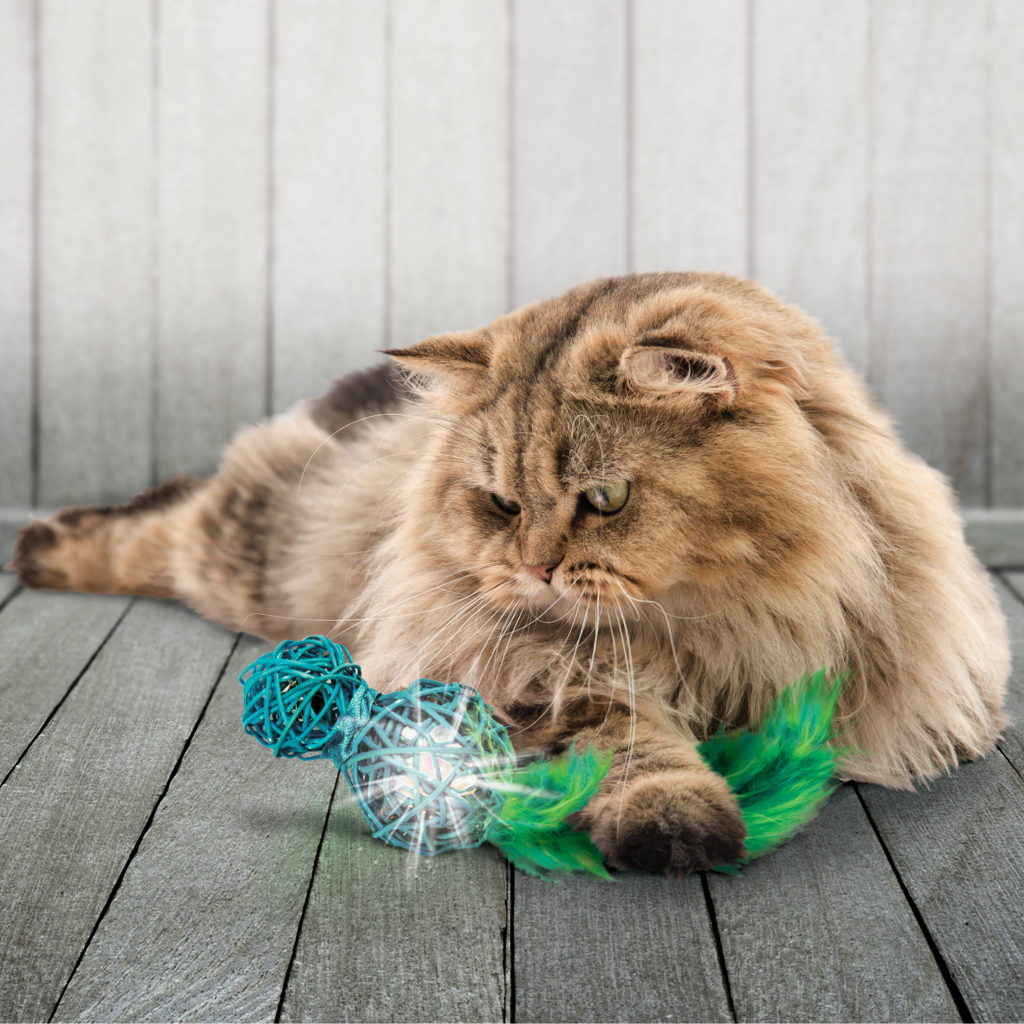We know that cats are fairly independent family members. We don’t worry about leaving them alone in the house during the day while we are at work. They are probably counting down the minutes until the pesky human who lives in their house gives them some alone time!
You may be a part of the camp who has always thought that training wasn’t within your cat’s realm. They just do what they do, and we supply their food, water, and litter. We are rewarded with some cuddles and an appreciative meow every now and again.
Training is definitely within your cat’s realm and might make both of your lives easier. Training your cat to accept nail trims and willingly going into their cat carrier for a trip to the vet may take some time. However, the investment of a scratch-free grooming session and a headache-less trip to the vet will make the time spent training your cat well worth it.
Not only will your cat learn new tricks, but the time spent with them will only strengthen your relationship with your cat. Let’s dig in and look at some cat training tips.
1. Determine What You Want Your Cat To Learn
Figuring out what you want your cat to learn is the very first step in training your cat. Do you want them to go into their cat carrier more easily? Do you want them to use their cat flap instead of meowing loudly for someone to open the door? Or maybe you want to teach your cat a new trick like rolling over?
Starting off with the basics, like learning to sit, gives you and your cat a strong foundation for training. Since this is an easy trick to teach, this is a behavior that you can constantly reward them more since they can easily perform this behavior several times per day. This consistent positive reinforcement shows your cat that when they perform desirable behaviors, they will be rewarded.
2. Focus on One Trick at a Time
You may have found that trying to multitask can be difficult, and with cats, this is no exception. Trying to teach your cat more than one trick at a time can cause confusion.
To start, you may want to focus on a trick that is easy to teach, like how to shake paws. This trick is fast to teach. You also get acquainted with training practices and create a consistent training routine. Your cat is exposed to training techniques that will lay a strong foundation for more complex tricks later.
3. Keep Training Sessions Short and Sweet
If you’ve ever sat in a meeting for work that was too long, you have found yourself getting distracted and unable to focus. It’s the same idea for your cat: Keep training sessions short and sweet so that your cat doesn’t lose interest. A few daily sessions, topping out at five minutes, will have your cat learning new skills in no time.
Even if it does feel like your cat is taking a long time to learn a new skill, be patient and persistent. We know that cats do things in their own time, and with consistency, it will happen!
4. Reward Good Behavior
Positively reinforcing the behaviors you want your cat to partake in is the most effective way to get your cat to perform tricks. Whenever your cat performs a desirable behavior, you’ll want to reward them as soon as possible.
Giving them a bit of their favorite treat or cat food is a surefire way to keep them intrigued and wanting to please you. Make sure that this food doesn’t add too much to their regular meals.
5. Keep It Positive
Although our cats can certainly get themselves into trouble from time to time, cat parents always want to avoid punishing their cats — even for scratching furniture, making you a human scratching post, or leaving poop somewhere other than the litter box.
If you punish your cat, it can affect the relationship negatively. Instead of associating a spritz of water with the fact that they were on the kitchen counter, they may associate the spritz of water with being in your presence.
This action enforces the idea to your cat that they do not want to be around you. Then, when you try to call your cat for a little training session, they may actively try to avoid you.
6. Clicker Train Your Cat
While we know that treats and food rewards are a great way to reward our feline friends for new behaviors, we sometimes don’t always have a treat in our pocket when our cat completes the desired task, such as giving you a high five or standing on its hind legs.
If you catch your cat being good by using the cat flap or going potty in the cat litter box, it’s time for a reward. The moment you place a treat in front of your cat’s paw is only a few seconds due to a cat’s limited attention span. This precious moment in time can be lost while you scramble around to find a treat for your cat.
Using a clicker while litter box training is a great way to signal to your cat that they are doing a job well done while also buying you a few seconds to put your hands on a treat. Luckily, you can stock your cat’s favorite spots with KONG treats when you want to reward them.
How To Clicker Train Your Cat
Using a clicker is easy peasy. When your cat does the desired action, you click and immediately follow with a treat. Your cat will get the hang of the idea quickly that the clicker means that a treat will soon follow.
In the beginning, it’s important to keep treats on hand so you can reinforce the idea. After your cat gets the hang of clicker training, you’ll be able to buy a few seconds to place your hands on a treat as your cat has learned that a click means a treat is coming.
Clickers can also help you be more precise with helping your cat learn what exactly they are getting rewarded for. If you want your cat to roll over, they’ll hear the click at the exact moment they roll as opposed to receiving praise when the roll is over.
Studies have found that cats respond positively to clicker training and that it can even be more powerful than simply lure-based (treat only) training alone. Pairing a clicker with a treat seems to be the ticket to training your cat.
7. Ignore Unwanted Behaviors
Since our cats learn by being positively reinforced, this can be to our detriment when it comes to bad behavior. If your cat constantly wakes you up in the middle of the night because they are hungry, and you get up and feed them, you have just positively reinforced their behavior.
If you have fallen into the trap of positively reinforcing behaviors that you want to avoid, like the 2 am snack call, ignoring unwanted behaviors is your best bet. It takes a strong will, but if you can show your cat that you will not pay attention to the behavior they are exhibiting, they will see that they will not receive any attention. Hopefully, they will soon stop performing that behavior.
8. Try Creative Solutions to Unwanted Behaviors
Sometimes, we want to curb unwanted behaviors. We can use creative solutions to help ward off these exploits without needing to punish or get upset.
If your cat likes to hang out on the kitchen counter or table, put aluminum foil or double-sided tape on their landing areas. Your cat will not enjoy this textural change and will keep them off your counters.
Keeping cats off of the furniture can be an especially difficult task, and your cat will take advantage of this when you are not at home. There are specially designed mats that can be placed on furniture that emit a loud noise when it senses movement or pressure. Your cat will quickly learn that jumping on this furniture will activate this undesirable noise.
With your subscription to the KONG Club, you have access to chat with animal behavioral specialists who can further help you with solutions to eradicate unwanted behaviors from your cats.
9. Keep Your Cat Busy & Engaged with KONG
Although our cats have gone from being predators in the wild to being adorable couch potatoes, they still have held onto some of their instinctual behaviors. These behaviors include hunting, pouncing, and chasing. Giving your cat opportunities to play and put these instincts to use helps keep them happy and healthy.
Additionally, keeping your cat engaged with toys designed for their needs helps keep them out of any shenanigans. After a fun play session, your cat will be ready for a nap in a sunny spot on the floor instead of using the side of the sofa to sharpen their nails.
No matter how well trained your cat is, they will still need an outlet to play and satisfy their curious nature. They’ll also love attention from you, and you won’t be able to help yourself after seeing them with their adorable KONG cat toys. You’ll also feel like an awesome pet parent for keeping your cat’s toy box up to date, and your cat will love you even more for it!
Sources:
Assessment of Clicker Training for Shelter Cats | PMC
Tips on Teaching Your Cat to Do Tricks | Blue Valley Animal Hospital
Positive Reinforcement: Training Your Cat | Napa Humane Society



